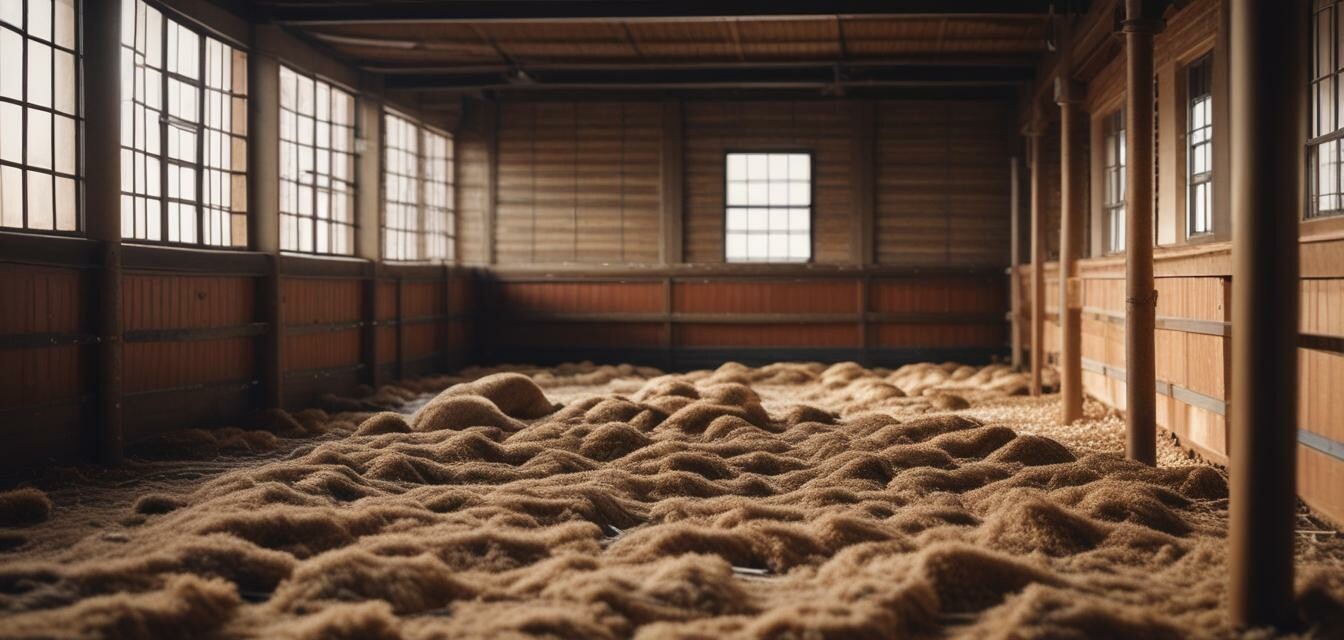
How to select the right equine bedding
Choosing the right bedding for your horse is essential for their comfort and health. With various options available, it’s important to understand the different types of bedding, their absorbency, comfort, and ease of cleaning. This guide breaks down everything you need to know to ensure a healthy living space for your horse.
Key Takeaways
- Equine bedding varies in materials, including straw, shavings, and pellets.
- Consider absorbency, comfort, and ease of cleaning when selecting bedding.
- Regular cleaning and maintenance can prolong the life of your bedding.
Understanding Equine Bedding Types
There are several types of bedding used in stables. Each type has its own advantages and disadvantages. Here’s a comparison of the most popular options:
| Type of Bedding | Absorbency | Comfort | Ease of Cleaning | Cost |
|---|---|---|---|---|
| Straw | Moderate | Good | Easy | Low |
| Wood Shavings | High | Comfortable | Moderate | Medium |
| Pelleted Bedding | Very High | Very Comfortable | Easy | High |
| Paper Bedding | High | Soft | Moderate | Medium |
| Coconut Coir | High | Very Comfortable | Moderate | Medium |
Factors to Consider When Selecting Bedding
When selecting bedding, consider these key factors:
- Absorbency: Good bedding should be able to absorb moisture effectively to minimize odor and provide a dry area for your horse to lie down.
- Comfort: Horses spend a lot of time lying down, so comfort is a significant factor. Softer bedding like pelleted or paper bedding tends to be more comfortable.
- Ease of cleaning: Some bedding types are easier to clean than others, which can save time and effort.
- Allergies: Be aware of any allergies your horse may have, as some bedding materials, such as wood shavings, can trigger respiratory issues in sensitive horses.
- Cost: Finally, consider your budget. While some bedding may be more expensive upfront, it could save you money in the long run through fewer changes.
Benefits of Proper Bedding
Using the right bedding material not only enhances your horse's living conditions but also has several additional benefits:
- Improves overall health by providing a clean environment.
- Reduces the risk of respiratory problems caused by dust and allergens.
- Increases horse comfort, leading to better rest and recovery.
- Simplifies stable maintenance, making chores easier and faster.
Maintenance Tips for Equine Bedding
To ensure the longevity and effectiveness of your selected bedding type, maintain it properly. Here are some maintenance tips:
- Regularly spot clean by removing manure and wet bedding daily.
- Completely strip and replace bedding every few weeks, depending on usage and type.
- Ensure proper ventilation in the stable to reduce moisture and odors.
- Store bedding in a dry area to keep it fresh and prevent mold.
Tips for Beginners
- Start with a blend of bedding types to understand your horse's comfort preferences.
- Rotate bedding types seasonally based on temperature and humidity.
- Keep communication open with your vet regarding any signs of discomfort or allergies in your horse.
Pros
- Better horse comfort.
- More effective waste management.
- Reduced risk of health issues.
Cons
- Some bedding types can be more expensive.
- Requires regular maintenance and care.
- Potential for allergies or sensitivities in some horses.
Conclusion
Selecting the right bedding for your horse is a vital step towards ensuring their comfort and well-being. Our guide provides you with the information needed to make an informed decision. It’s essential to consider absorbency, comfort, ease of cleaning, and your specific horse's needs. With the right bedding, you can create a safe and welcoming environment for your horse. For more information on optimal horse care practices, visit our Horse Care Blog or check our Horse Care Products category for quality supplies.
